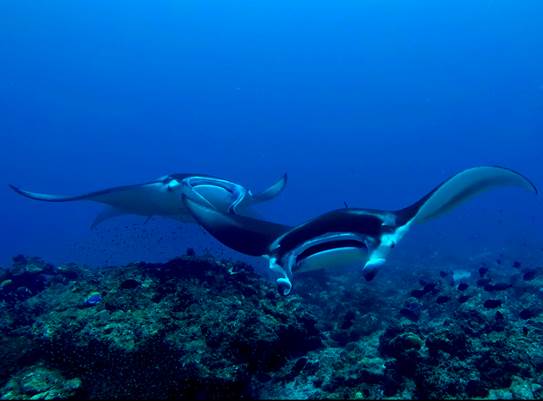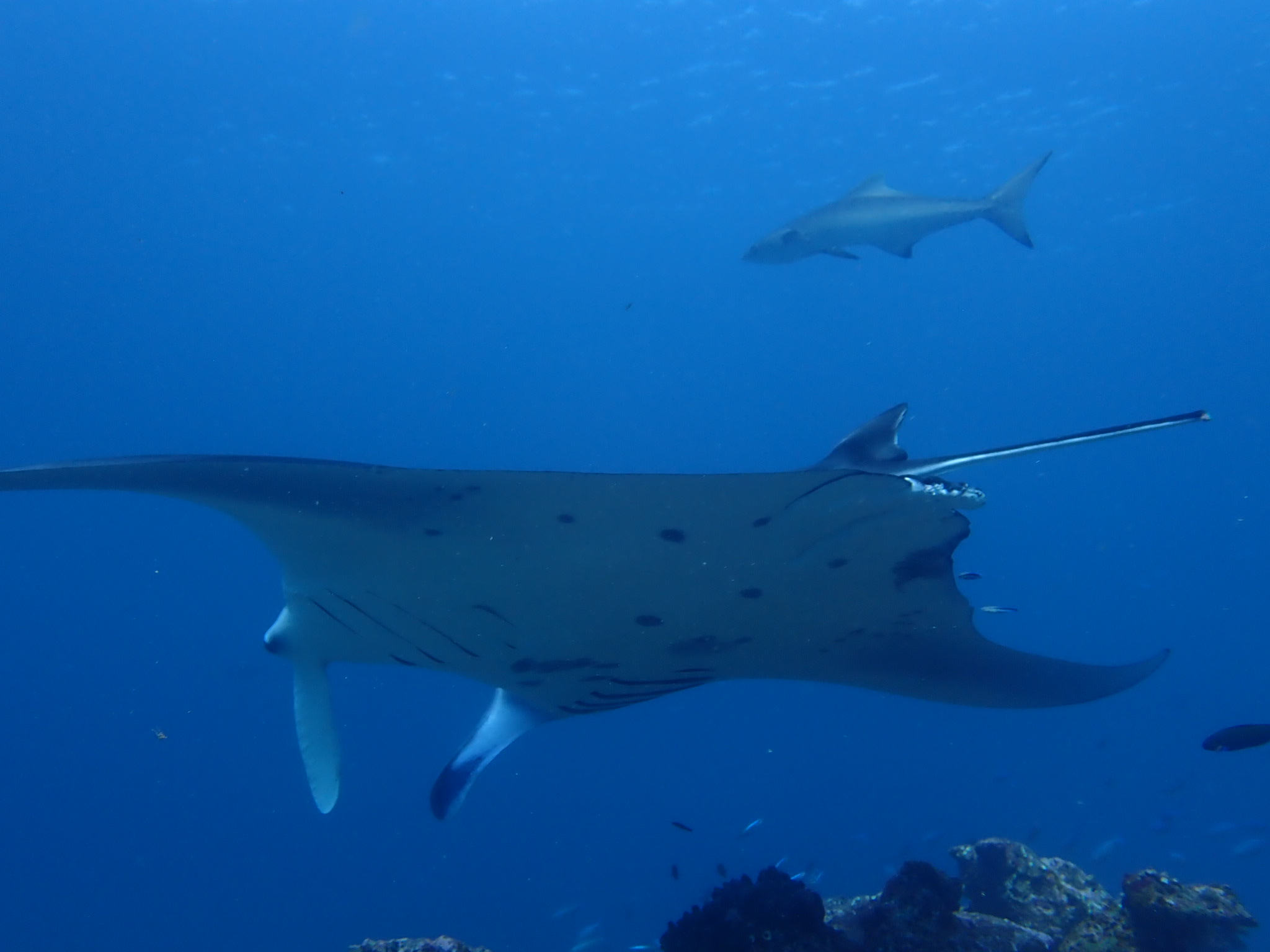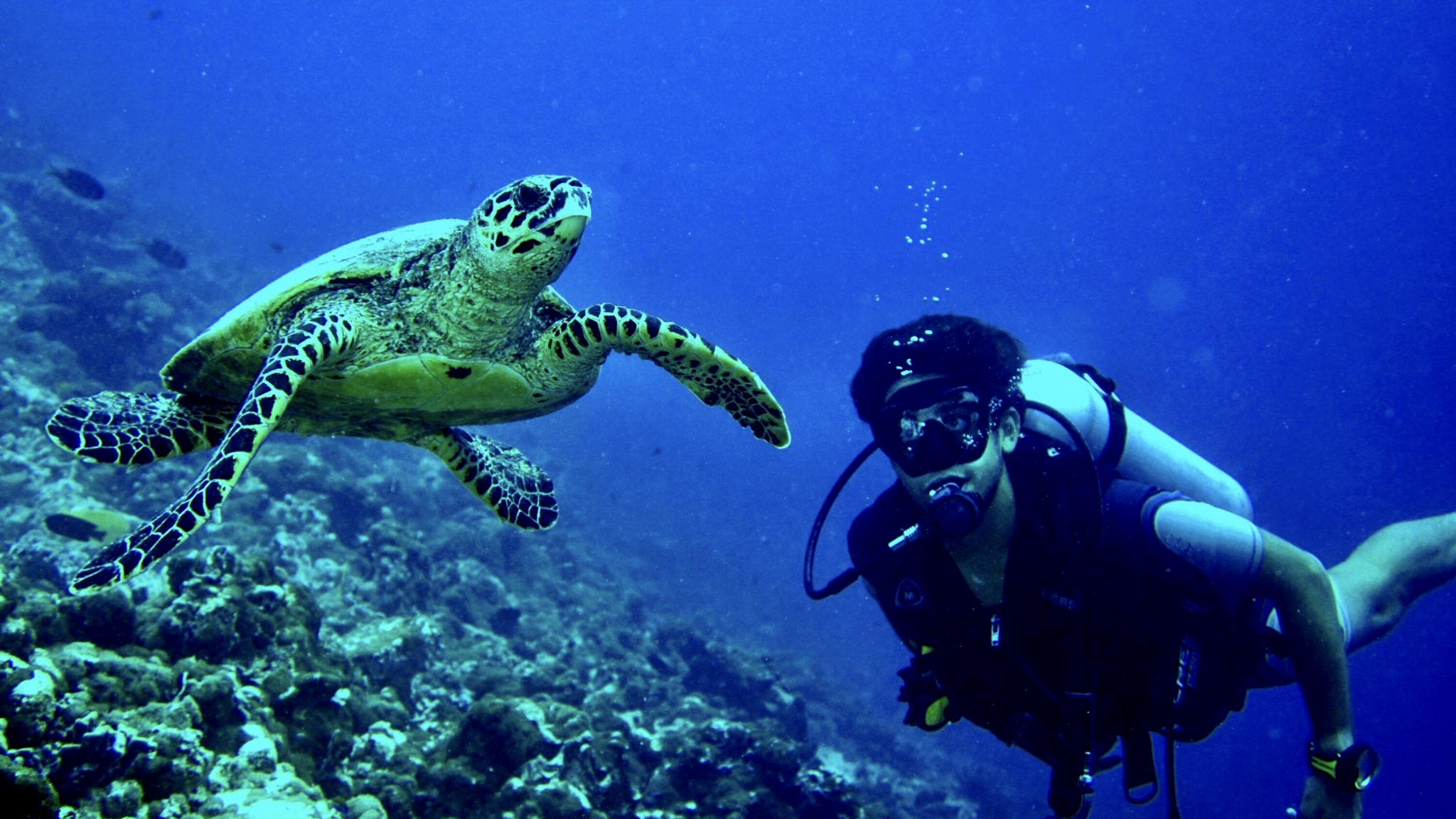Underwater Life
MARINE EXCURSIONS
All our marine excursions have been created and developed to reduce the impact on the environment, while also contributing to the monitoring of biodiversity and economy of the local community. Guests have the opportunity to support concretely the process by adhering to the numerous “conservation snorkelling” that take place within a monitoring framework. In reality, we don’t just watch dolphins and manta rays; we also keep track of them with the help of tourists. Thanks to these activities we are able to collect biologically significant evidence indicating the dynamics and behaviour of the population of these wonderful species on a short- and long-term scale.
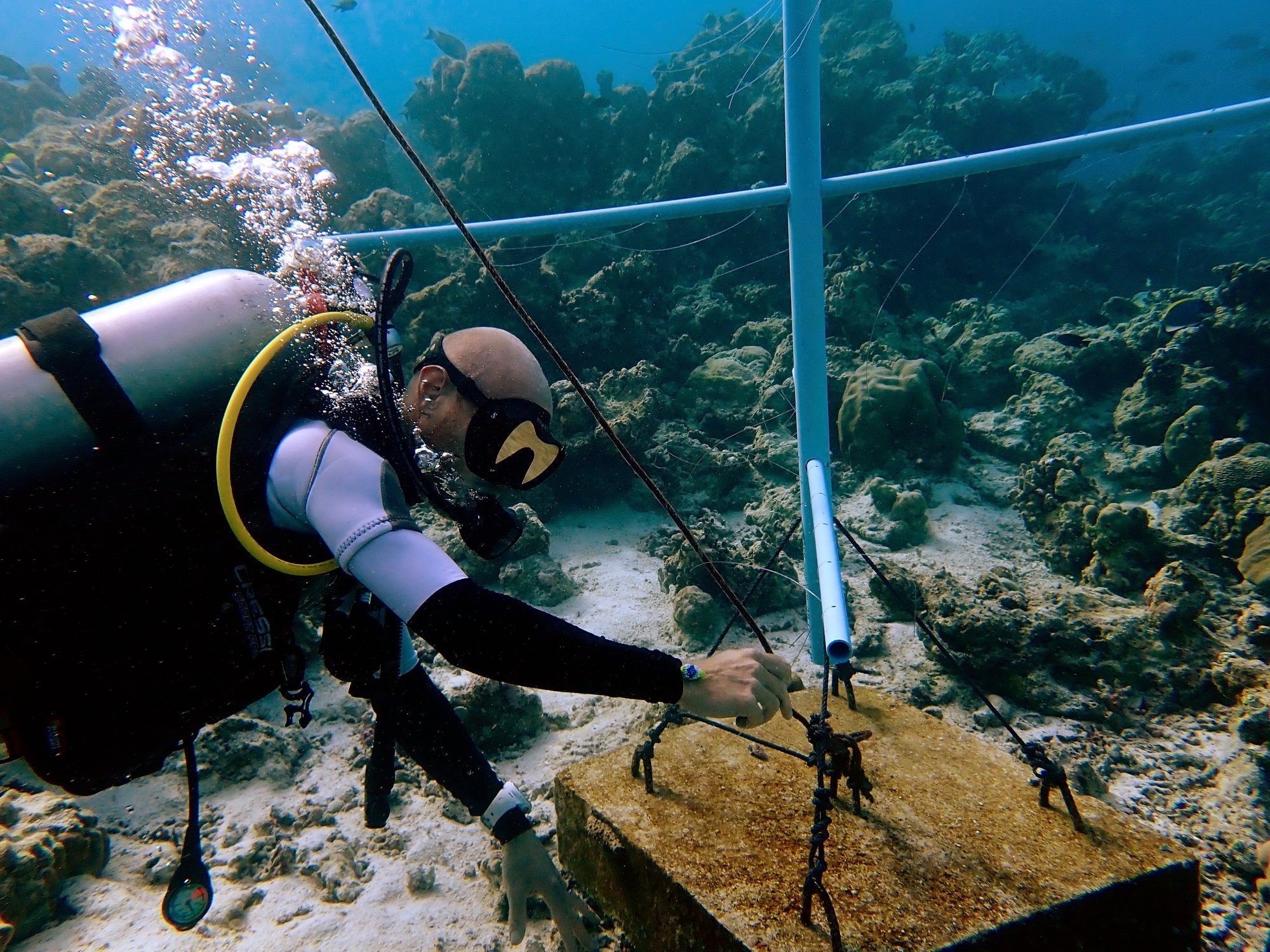

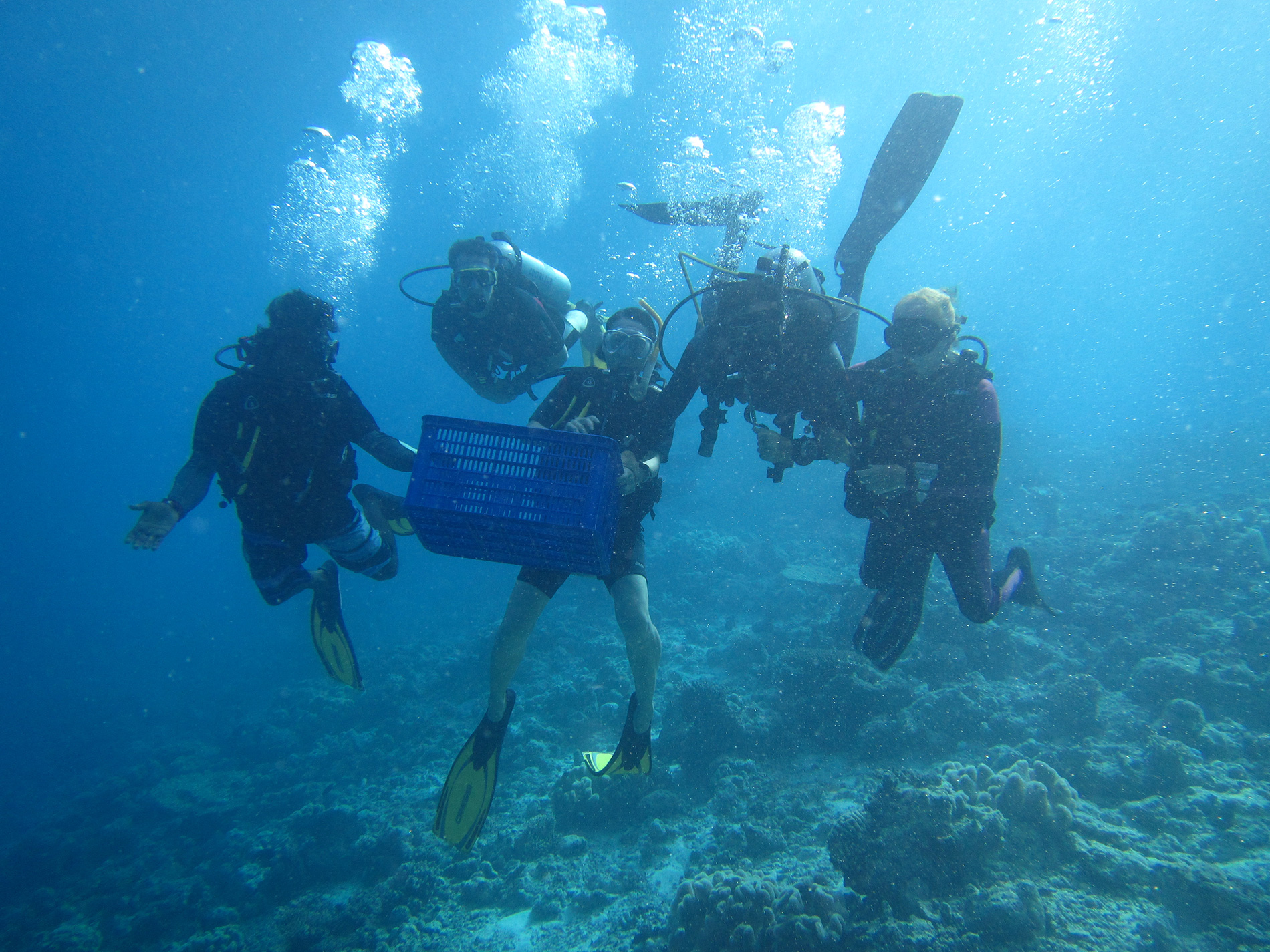
Guests are invited to participate in the following activities throughout their stay:
- Complimentary Guided Snorkeling: a snorkeling by boat on the house reef is offered twice a week.
- Guided Snorkelling Tours: the daily trips planned by the marine biologist allow visitors to witness mantas, dolphins, turtles, corals and a variety of fish in numerous reefs throughout the atoll.
- Diving: we collaborate with our dive instructors to ensure that our policies and dive courses meet the resort sustainability standards, while also improving diver knowledge of what they can do to help protect the ocean.
- Beach Clean Ups: to protect the beach and associated systems, the marine biologist and diving center arrange clean-up days. As a result, we are able to maintain the environment clean and, more importantly, we are able to raise awareness of waste decomposition among our guests.
- Evening Presentations: we hold workshops about marine life three nights a week, covering topics from turtles to sharks, rays, dolphins, fish families, coral reefs, and plastic pollution. Moreover, blue planet documentaries and diving video are broadcast during the week after dinner.
TURTLE AND MANTA MONITORING
Our Atoll hosts green and hawksbill sea turtles. Thanks to the project of ID monitoring that we are carrying on with the Olive Ridley association, which is based here in the Maldives, we are able to identify each turtle of the area as an individual. By doing so we can study and learn about the local population and its distribution.
Besides, we follow a Code of Conduct for how to behave with these magnificent animals while snorkeling and diving. We are very keen on sharing with the tourists the opportunity to see them, but even more important for us is that there is respect for this marine species. For this reason, we expose several flyers on how to behave and the code is always repeated to customers at each excursion.
- Identification Database: help us photograph and identify green and hawksbill turtles seen on our snorkel and dive sites.
- Nesting: we are fortunate to be one of the only beaches in the Maldives that is home to the olive turtle’s nest. In fact, this specie is an oceanic one and rarely reaches the reefs. We take minimal data while the female is on the beach so as not to disturb her.
- Hatching: juveniles will hatch approximately two months after nesting, usually May through September.
- Rescue: we rescue and provide assistance to any turtles we encounter that are injured or stuck in a ghost net.
Moreover, we rely on a specific Code of Conduct for the interactions with the gigantic manta rays. We insist that our snorkeler and diver guests follow it when getting across with these beautiful animals.
We have also collaborated with Manta Trust taking part in the Maldivian Manta Ray Project, a project founded to learn more about the life cycle, population dynamics and habitat usage of the Maldives manta population. Throughout the research we can help the worldwide conservation of manta rays and in the meantime, we provide the guests with marine education and we spread the importance of their survival.

